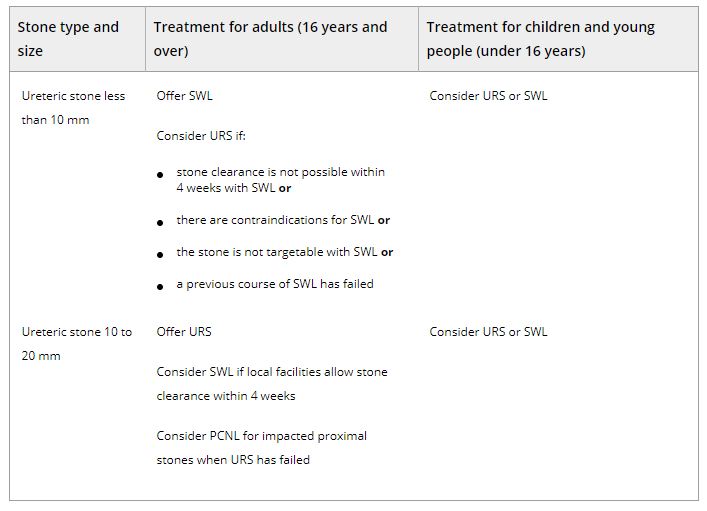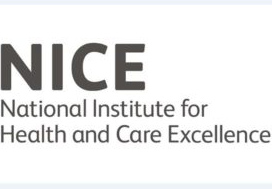In January 2019, the National Institute for Clinical Excellence (NICE) and British Association of Urological Surgeons (BAUS) published new guidance on the management of Acute Ureteric Stones. This guidance suggests that primary definitive treatment should be the goal for all symptomatic ureteric stones, via either ureteroscopy (URS) or extra-corporeal shock wave lithotripsy (EWSL), and should be undertaken within 48 hours of acute presentation.
This is in stark contrast to current practice in the UK: Getting It Right First Time evidence suggests 20% (2-49%) of acute stones are currently treated in this way with only 8% treated primarily with URS and just 2% with primary ESWL.
It has been shown that primary definitive treatment of acute stones within 48 hours has superior outcomes to secondary definitive treatment after stenting; including a higher chance of achieving a stone free state, lower chance of needing retreatment, reduced exposure to general anaesthetic and associated complications, and avoidance of stent-associated symptoms.
However, due to the nature of current emergency surgery provision in UK NHS Trusts, primary definitive treatment is often impossible. Procedures are performed on pressured CEPOD lists which may not be set up for laser treatment (lacking suitable equipment and trained scrub staff) and are often incredibly time-pressured, necessitating ureteric stenting as a faster and simpler option.
Whilst the upfront investment required to provide sufficient resources and training is expected to be recovered downstream by reducing costs associated with stent use and the need for multiple procedures, NHS Trusts are reluctant to make these upfront investments unless incentivised.
We propose a potential solution in the form of Best Practice Tariffs (BPTs).
Traditionally, NHS Trusts receive their income from Clinical Commissioning Groups (CCGs) on the basis of a ‘Payment by Results’ (PbR) system. Under this system, tariffs are calculated based on the national average cost for clinically similar treatments (grouped together into healthcare resource groups; HRGs) and Trusts can retain additional income by keeping costs below this national average. However, this can lead to wide variations in the standards of care. Lord Darzi’s 2008 ‘High Quality Care For All – NHS Next Stage Review’ report suggested that a revised payment system be used, where payment depended on compliance with best-known practice; a best-practice tariff (BPT).
BPTs have now been rolled out across more than 50 diseases and procedures including cholecystectomies, strokes/TIA and NSTEMIs and are recognised as an effective tool for changing practice in an acute setting.
One of the earliest examples was in the management of fractured neck of femurs (NOFs). The base tariff was halved and an additional BPT of £1,335 was made available if seven key ‘best practice’ criteria were met. A dramatic improvement in adherence to national guidelines for management of NOF fractures was seen after introduction of this BPT as shown in Figure 1 (Royal College of Physicians; 2014).
Of particular relevance here was the BPT criteria that required a ‘time to surgery within 36 hours from arrival in A&E to the start of anaesthesia’. The overall median time reduced from 44 hours pre-BPT to 23 hours post-BPT (p<0.005) and the proportion of patients being operated on within 36 hours of admission increased from 36% pre-BPT to 84% post-BPT (p<0.005).
BPTs have the most potential utility for high volume procedures with large variations in national practice and where there is a strong evidence base regarding what constitutes best practice. Renal stones are high volume, affecting 12.5% of the population and resulting in 18,000 URS procedures a year. There is significant national variation in management and there is strong evidence on best practice.
Therefore, if we truly believe that the BAUS and NICE guidelines are in the best interests of patients, BPTs should be considered as a tool to prompt a rapid paradigm shift and make the gold standard, of primary definitive treatment within 48 hours, the new norm.
Further details available here.
by Sam Folkard, Richard Menzies-Wilson, Charlotte Burford, Paula Pal and James Green
Twitter: @FolkardSam












